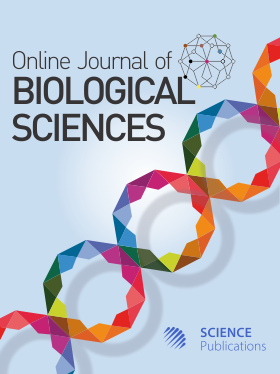Ultrastructural Morphology of the Muscle System Organization in the Trematode Typhlocoelium cucumerinum
- 1 Department of Biology and Ecology, Toraighyrov University, Pavlodar, Kazakhstan
- 2 Faculty of Natural Sciences, Alkey Margulan Pavlodar Pedagogical University, Pavlodar, Kazakhstan
- 3 Department of Biology, Faculty of Science, University of Zagreb, Zagreb, Croatia
Abstract
Trematodes, also known as flatworms, are a diverse group of parasitic organisms that live in a variety of ecosystems, from freshwater to marine habitats. Their complex life cycle often involves intermediate and definitive hosts and multiple developmental stages. Trematodes have unique morphological features that allow them to adapt, move and parasitize within host tissues and organs. The parasitic lifestyle of trematodes is facilitated by their well-developed dermal muscle sac, which allows them to move and attach to various organs of the host. The study of the biology, histology and morphology of trematodes is the main task of modern parasitology. To date, there are studies investigating the locomotor system of trematodes, but there is no clear data on the structure and functional characteristics of the structure of the trematode dermal muscle sac. This study can improve our understanding of trematode morphology and physiology, including the structure and function of the muscle system of Typhlocoelium cucumerinum. Ultrastructural studies revealed novel features that allow fixation and locomotion of the trematode T. cucumerinum. The study provided information on the unique characteristics of individual tissues, organs and systems, with emphasis on the functional features of the tegument. The studies carried out allowed the principles of structural and functional interactions between the supporting and contractile elements of its locomotor organs to be revealed. It is suggested that the basal lamina of the tegument acts as a shock absorber under compression and pressure, resulting in tight attachment to the walls of tissues and organs of wild birds. The basal lamina is a complex structure consisting of several layers. The morphology and development of the basal lamina can vary between different groups of organisms, depending on the specific localization of the organ in the host organism. Collagen filaments play a crucial role in providing structural support to the basal lamina. The results of this study may provide a basis for future research into the development of anthelmintics that target the muscle system of trematodes. Such research could greatly improve the effectiveness of preventive measures against these parasites.
DOI: https://doi.org/10.3844/ojbsci.2024.555.561

- 3,487 Views
- 1,699 Downloads
- 0 Citations
Download
Keywords
- Ultrastructure
- Musculocutaneous Sac
- Typhlocoelium Cucumerinum
- Muscle Cell Elements
- Basal Plate
